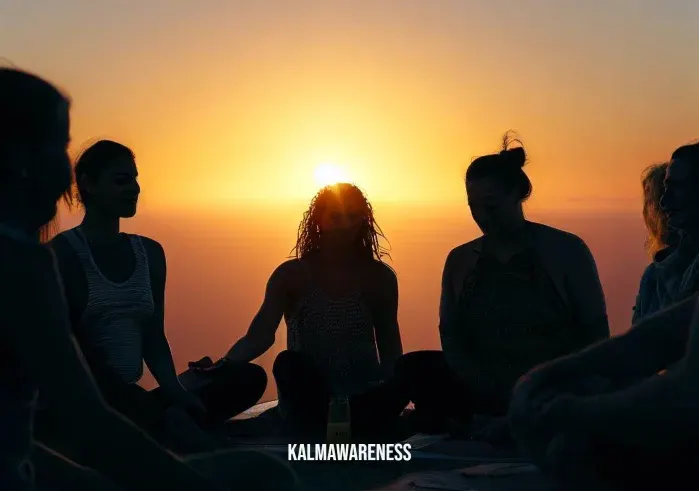Yoga Deep Squat Pose: Embrace Flexibility and Strength
| Description | Explanation |
|---|---|
| Pose Name | Yoga Deep Squat Pose |
| Original Name | Malasana |
| Difficulty Level | Intermediate |
| Pose Category | Hip Opening |
| Exercise Duration | 1-2 minutes |
Are you looking to improve your flexibility and strengthen your lower body? If so, the Yoga Deep Squat Pose, also known as Malasana, might be just what you need. This versatile yoga pose targets your hips, thighs, and lower back, providing an excellent stretch and strengthening those muscles simultaneously.
Benefits of Yoga Deep Squat Pose
Before we dive into the step-by-step guide to achieve this pose, let’s explore the wonderful benefits it offers:
- Hip Flexibility: Yoga Deep Squat Pose opens up your hips, helping to increase flexibility in the hip joint area. This is particularly beneficial for individuals who spend long hours sitting or have tight hip muscles.
- Lower Body Strengthening: As you lower your body into the deep squat position, your thighs, hamstrings, and quadriceps engage, creating a strengthening effect on these muscle groups.
- Digestive Health: This pose can help in stimulating your digestive organs, which may aid in digestion and relieve bloating and discomfort.
- Ankle Mobility: The deep squat position works on your ankle mobility, enhancing your ability to move with ease and balance.
- Pelvic Floor Activation: Yoga Deep Squat Pose activates and strengthens the pelvic floor muscles, promoting better pelvic health.
Step-by-Step Guide
Now that you know the fantastic benefits of the Yoga Deep Squat Pose, let’s get into the step-by-step instructions:
1. Starting Position
- Stand with your feet slightly wider than hip-width apart, toes pointing slightly outward.
2. Lower into a Squat
- Slowly bend your knees and lower your hips down towards the ground.
- Bring your palms together at your chest in a prayer position, pressing your elbows against your inner thighs.
3. Lengthen Your Spine
- Lengthen your spine by gently lifting your chest and extending your tailbone downwards.
4. Deepen the Pose
- If possible, sink deeper into the squat by pressing your elbows against your knees, encouraging your hips to open further.
5. Keep Your Balance
- Find your balance and distribute your weight evenly between your heels and the balls of your feet.
6. Hold the Pose
- Hold the Yoga Deep Squat Pose for 1-2 minutes. Beginners can start with shorter durations and gradually increase the time as they feel comfortable and more flexible.
7. Release the Pose
- To release the pose, place your hands on the floor and straighten your legs, coming back to a standing position.
Yoga Deep Squat Pose for Advanced Practitioners
For more advanced practitioners, the Yoga Deep Squat Pose can be modified to intensify the stretch and challenge your balance:
- While in the deep squat, try lifting your heels off the ground, balancing on the balls of your feet. This variation adds an extra challenge to your ankle mobility and strength.
Note: As with any yoga pose, it’s essential to listen to your body and avoid any movements that cause pain or discomfort. If you have any pre-existing health conditions or injuries, consult a yoga instructor or healthcare professional before attempting this pose.

Yoga Deep Squat Pose: Embrace Flexibility and Strength
In the first part of this article, we explored the invigorating Yoga Deep Squat Pose, also known as Malasana, and its incredible benefits for the body and mind. Now, let’s delve deeper into this empowering pose, understanding its advantages, who should approach it with caution, and variations suitable for practitioners of different experience levels.
Benefits of Yoga Deep Squat Pose
The Yoga Deep Squat Pose offers a multitude of benefits that go beyond flexibility and strength. Let’s take a closer look at how this pose can enhance your overall well-being:
- Improved Posture: Practicing Malasana regularly can lead to better posture, as it stretches and strengthens the muscles in your back and core, helping you maintain an upright stance.
- Mental Calmness: This grounding pose encourages a sense of calm and tranquility, promoting relaxation and reducing stress and anxiety levels.
- Pelvic Health: By engaging the pelvic floor muscles, Malasana contributes to improved pelvic health and increased awareness of this vital area.
- Therapeutic for Digestive System: Yoga Deep Squat Pose can aid digestion by encouraging the movement of food through the digestive tract, potentially alleviating issues such as constipation.
- Hip Flexor Stretch: As you lower into the deep squat, your hip flexors are stretched, which is particularly beneficial for individuals who sit for extended periods.
- Preparation for Birth: Malasana is often recommended for pregnant women, as it helps open the hips, strengthen the pelvic floor, and prepares the body for childbirth.
Precautions and Contraindications
While Yoga Deep Squat Pose offers numerous benefits, it might not be suitable for everyone. Here are some precautions to consider before practicing this pose:
- Knee or Ankle Injuries: If you have knee or ankle injuries, it’s best to avoid Malasana or perform it under the guidance of an experienced yoga instructor, using props to support your knees and ankles.
- Lower Back Issues: Individuals with lower back problems should be cautious while practicing this pose. They can modify it by placing a cushion or yoga block under their heels for support.
- Recent Hip Surgery: If you’ve had hip surgery recently, consult your healthcare provider or physical therapist before attempting the Yoga Deep Squat Pose.
- Tight Hips: If you have tight hips, it might be challenging to achieve the full expression of this pose. Focus on gradually opening your hips with other hip-opening exercises before attempting Malasana.
Variations for Different Levels
Yoga Deep Squat Pose can be modified to suit practitioners of varying experience levels. Here are some variations to explore:
1. Supported Squat
For beginners or individuals with limited flexibility, practicing the supported squat is a great way to ease into the full pose:
- Stand with your back against a wall and your feet about hip-width apart.
- Slowly lower into a squat, sliding your back down the wall for support.
- Keep your feet flat on the ground and your hands in a prayer position at your chest.
- Hold the pose for a comfortable duration and gradually increase the time as your flexibility improves.
2. Elevated Heels Squat
If you have difficulty keeping your heels grounded in the full squat, this variation can be beneficial:
- Place a folded yoga mat or cushion under your heels to elevate them slightly.
- Lower into a deep squat, using the support of the elevated heels to maintain balance.
- Engage your core and keep your spine straight throughout the pose.
3. Garland Pose
Garland Pose, or Malasana Variation, is an intermediate level variation that deepens the hip and groin stretch:
- Begin in the Yoga Deep Squat Pose.
- Separate your knees wider than hip-width apart and bring your palms to the floor between your feet.
- Press your elbows against your inner thighs and lengthen your spine.
- Hold the pose for as long as comfortable, breathing deeply.

Yoga Deep Squat Pose: Embrace the Wisdom of Tradition and Spirituality
In the previous chapters, we explored the invigorating Yoga Deep Squat Pose, its benefits, and variations suitable for practitioners of different experience levels. Now, let us dive into the rich history and spiritual significance of this empowering pose, understanding how it has transcended generations and cultures to become a symbol of profound wisdom and balance.
The History of Yoga Deep Squat Pose
The roots of the Yoga Deep Squat Pose can be traced back to ancient yoga practices. In traditional Hatha yoga, Malasana was considered one of the essential sitting postures for meditation and spiritual awakening. Yogis believed that by assuming this deep squat position, one could connect with the earth’s energy, finding grounding and stability in both the physical and spiritual realms.
Throughout history, this pose was not only utilized for meditation but also as part of daily life in many cultures. People in various regions across the world would naturally squat during daily activities, such as cooking, eating, or working, reflecting a harmonious relationship with nature and the environment.
The Spiritual Significance
The Yoga Deep Squat Pose holds spiritual significance, representing a connection with the present moment and the core of existence. As you lower yourself into the deep squat, you align your body with the earth, symbolizing a profound sense of surrender and humility. This humble posture teaches us to let go of ego and embrace simplicity, paving the way for inner transformation and spiritual growth.
In some spiritual traditions, this pose is associated with the concept of Muladhara, the root chakra, which represents stability, security, and a sense of being grounded. Practicing Malasana is believed to stimulate and balance the Muladhara chakra, fostering a deeper connection with the self and the world around us.
Tips for Getting the Most Out of the Pose
To fully experience the benefits of Yoga Deep Squat Pose, keep the following tips in mind during your practice:
- Breathe Mindfully: Focus on your breath throughout the pose. Inhale deeply, expanding your chest and filling your lungs, and exhale slowly, releasing any tension.
- Maintain Alignment: Keep your spine straight and lengthened as you lower into the squat. Avoid rounding your back, which can strain your lower back and hamper the benefits of the pose.
- Engage Your Core: Draw your navel towards your spine to engage your core muscles, supporting your lower back and maintaining stability.
- Patience and Persistence: If you’re new to this pose or have limited flexibility, be patient with yourself. Regular practice and gentle stretching will gradually improve your deep squat position.
Common Mistakes to Avoid
While Yoga Deep Squat Pose is highly beneficial, certain mistakes can compromise the effectiveness of the pose or lead to discomfort. Avoid the following errors:
- Collapsing the Chest: Maintain an open chest and lift your heart towards the sky. Avoid rounding your shoulders forward.
- Putting Pressure on Knees: Be mindful of your knees; avoid pushing them too far forward or allowing them to collapse inward. Aim to keep your knees aligned with your ankles.
- Overexertion: If you experience pain or discomfort, ease out of the pose and find a modification that suits your current level of flexibility.
Modifications for Injuries or Limited Flexibility
Yoga Deep Squat Pose can be adapted to accommodate various physical conditions and injuries. Here are some modifications to consider:
- Elevated Heels: If your heels don’t comfortably touch the ground, place a rolled-up towel or yoga block under them for support.
- Support for Knees: Use a cushion or folded blanket under your heels to reduce pressure on your knees.
- Wall Support: Stand with your back against a wall for extra stability as you perform the squat.
Poses Complementary to Yoga Deep Squat Pose
To deepen your yoga practice and enhance the benefits of Yoga Deep Squat Pose, consider incorporating these complementary postures:
- Cobra Pose (Bhujangasana): Cobra Pose helps counterbalance the forward bending in Malasana, stretching the spine and chest, and strengthening the back muscles.
- Pigeon Pose (Eka Pada Rajakapotasana): Pigeon Pose provides a deep hip stretch, complementing the hip-opening effects of Malasana.
- Seated Forward Bend (Paschimottanasana): This forward bend stretches the hamstrings, lower back, and calves, supporting flexibility in Malasana.
- Child’s Pose (Balasana): Child’s Pose is a gentle resting posture that allows you to release any tension and relax after performing Yoga Deep Squat Pose.
Conclusion
The Yoga Deep Squat Pose, or Malasana, transcends time and culture, embodying the profound wisdom and spirituality of ancient yoga practices. By incorporating this empowering pose into your yoga routine, you can experience its transformative benefits on the physical, mental, and spiritual levels.




